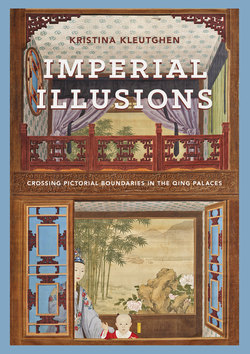Читать книгу Imperial Illusions - Kristina Kleutghen - Страница 45
На сайте Литреса книга снята с продажи.
ОглавлениеSuch was the environment into which European pictures were introduced. The specific historical moments of the Tang, Northern Song, and seventeenth century exemplify just how inextricable the decline of pictorial illusionism and trained technique vis-à-vis murals are from the rise in literati painting aesthetics and values. Peaking around 1600, just as European images and representational techniques began arriving in China, such priorities could not but affect responses to European works that emphasized technique, mimesis, and illusionism—the very elements the literati explicitly rejected beginning centuries earlier. Through the Jesuits, the works they brought from Europe, and those they created in China to serve their mission, the tensions over formlikeness versus spirit resonance in art now became inflected by cultural differences as much as by social and intellectual differences.
Cultural Politics and the Early Sino-European Artistic Encounter
Although the first Europeans confirmed to have spent extended time on Chinese soil were missionaries and travelers at the Mongol Yuan court,45 and the Portuguese settled on Macau as a trading port under Ming sovereignty in the 1550s, sustained mainland Chinese contact with Europeans began only with the establishment of the Jesuit mission there in the late sixteenth century. Several different Catholic groups established missions in China, but the Jesuits were by far the most influential, and were largely responsible for the transmission of Renaissance European culture.46 Founded by St. Ignatius Loyola (1491–1556) in Rome in 1540, the Society of Jesus provided its members with unparalleled levels of polymathic education in theology, rhetoric, languages, logic, philosophy, mathematics, and science as tools for global conversion. Although they did not specifically train their novitiates in painting, leaving that to individual interests, the Society was well aware of the persuasive power of the image, and often commissioned works of art such as engravings, printed books, and oil paintings with didactic Christian subjects. The high demand of the foreign missions for images led to local Jesuit art schools, such as in Japan. In 1583, Alessandro Valignano, S.J. (1539–1606), founded a Japanese “Seminary of Painting,” which was headed by the Neapolitan painter, engraver, and sculptor Giovanni Niccolò, S.J. (1563–1626).47 Working in a varyingly syncretic blend of European and Japanese styles, the so-called Niccolò school produced religious paintings and prints as well as trained artists, all of which served the Asian missions in Japan and elsewhere even after the Japanese government expelled all missionaries from the archipelago to Macau in 1614.
In 1582, only one year before the painting seminary opened in Japan, Matteo Ricci, S.J. (Li Madou, 1552–1610), established the Jesuit mission in China. For the remainder of the Ming dynasty, this mission sought to reconcile Christianity and European technical knowledge with scholarly Confucianism in order to appeal to the scholar-official class, whose dress Ricci adopted as the standard Jesuit costume in China. Ricci regularly used religious prints and paintings as evangelical tools, and requested that his superiors
